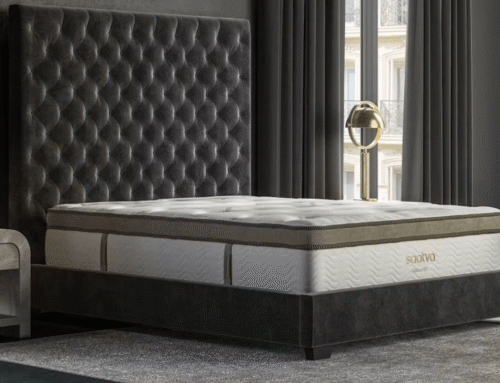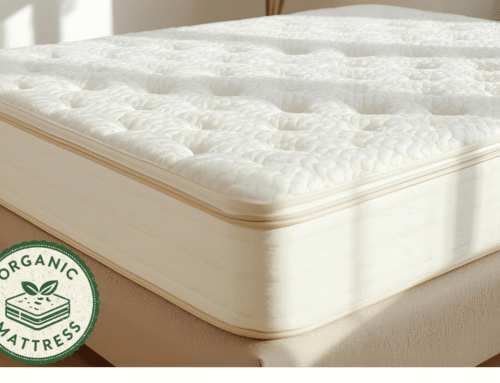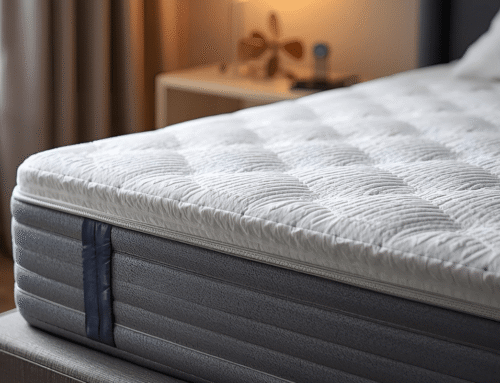A gel memory foam mattress blends contouring support with a cooler sleep surface. Traditional memory foam traps body heat, which leads to uncomfortable and sweaty nights. Gel-infused models address this issue by dispersing heat more efficiently through the added gel particles.
Sleepers describe gel memory foam as more breathable than standard foam. Some say it eases that “sinking” feeling while still providing pressure relief around the hips and shoulders. It feels slightly firmer, which suits those who shift positions throughout the night.
Let’s break down how this type of mattress works and explore if its cooling and support features align with what someone needs for better sleep. To better understand gel memory foam, it helps to know what a memory foam mattress is, the best thickness for comfort and support, typical costs associated with these mattresses, and the importance of waiting up to 48 hours before sleeping on a new memory foam mattress.
Key Takeaways
- Gel memory foam contours to your body, relieving pressure on hips and shoulders without feeling too firm or stiff right from the start.
- Cooling gel beads help prevent heat buildup, creating a more breathable sleep surface, perfect if you tend to get warm at night.
- This mattress offers excellent pressure relief, especially for side sleepers or anyone dealing with sore joints, back pain, or stiffness.
- Motion isolation keeps movement from disturbing you, making it a peaceful choice for couples.
- When made with high-density foam, these mattresses typically last 7–10 years and maintain their comfort and coolness over time.
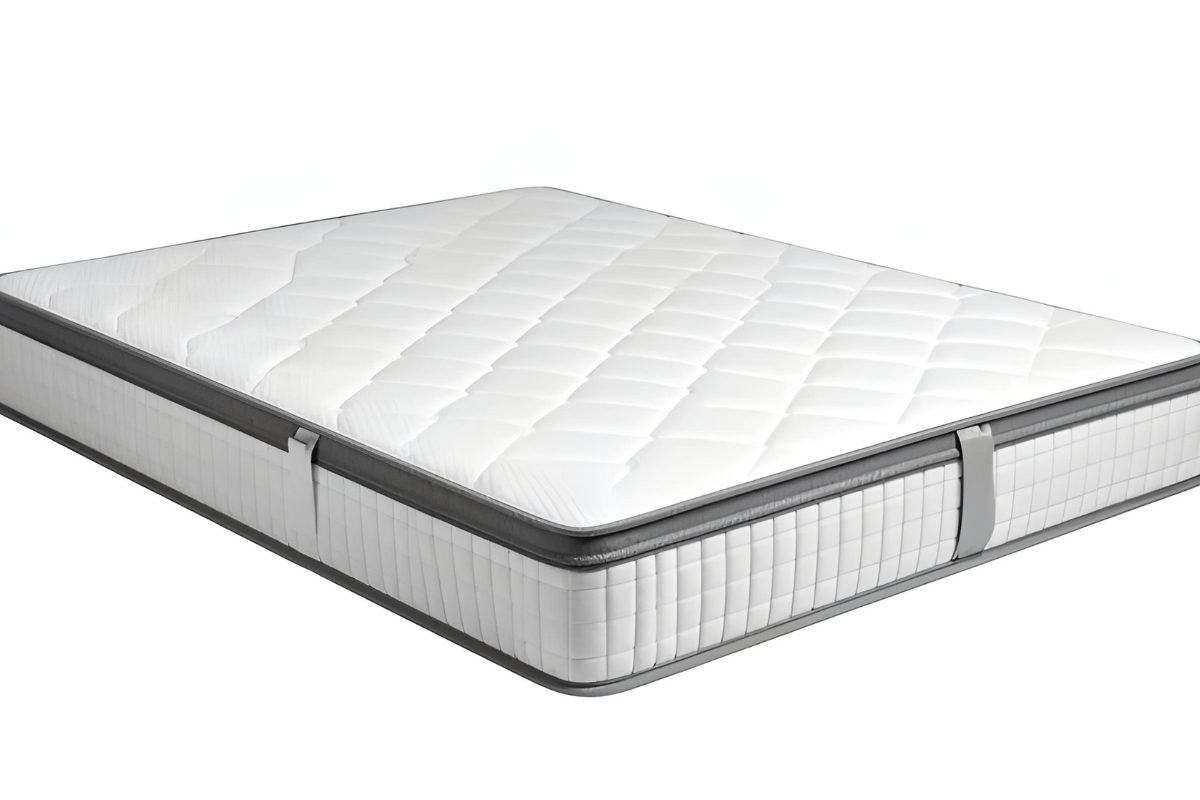
How Gel Memory Foam Works
Gel memory foam responds to pressure and body heat, so it contours closely and provides a cushioned feel. This material feels soft yet supportive, especially for those with joint sensitivity or who sleep on their side. Unlike basic foam, it doesn’t feel overly dense or stiff right out of the box.
The main appeal comes from the gel infusion, which gives the surface a cooler touch. Most versions use either swirls of gel or tiny gel beads mixed into the foam layers. These additions work together to absorb warmth and redistribute it, so the surface doesn’t feel stuffy overnight.
Some models use extra elements like graphite or phase-change materials that react to temperature shifts. These additions aim to help the foam stay comfortable without holding onto body heat. Adjusting the mattress can improve cooling performance and firmness by modifying its composition and materials.
Cooling Performance
Most people say gel-infused memory foam feels cooler than standard foam, especially during the first few hours of sleep. The gel absorbs body heat and spreads it out instead of holding it close. Open-cell foam adds airflow, which helps the surface stay cooler for a bit longer. A breathable cover or ventilated foam layer boosts that cooling effect. Some sleepers wake up less from heat, especially in warm climates or during the summer. Still, no mattress stays cold all night. Heat builds up eventually, more so in rooms with poor ventilation.
Cooling features provide some relief, though results differ depending on body weight, room temperature, and sleep position. Hot sleepers may still feel warm by early morning. Lightweight sleepers notice more cooling since they don’t sink in as much, which limits trapped heat around the body.
Benefits Of A Gel Memory Foam Mattress
- Gel-infused foam provides a cooler sleep surface, especially compared to traditional memory foam that traps heat. People who feel warm at night usually find this type more breathable and comfortable. It reduces the need to flip the pillow or kick off the covers.
- Pressure relief stands out as another reason many prefer this type of mattress. The foam contours to the body and eases weight off the shoulders, hips, and lower back. Side sleepers or those who deal with discomfort often feel more at ease on it.
- It supports the spine and helps it stay in a neutral position through the night. That level of alignment may reduce morning stiffness or relieve ongoing back pain. The support feels steady while still providing a soft cushion.
- Motion stays isolated, which benefits anyone who shares a bed. Movement on one side won’t disturb the other, even if one partner turns frequently. The mix of support and plush comfort creates a more peaceful experience for light sleepers.
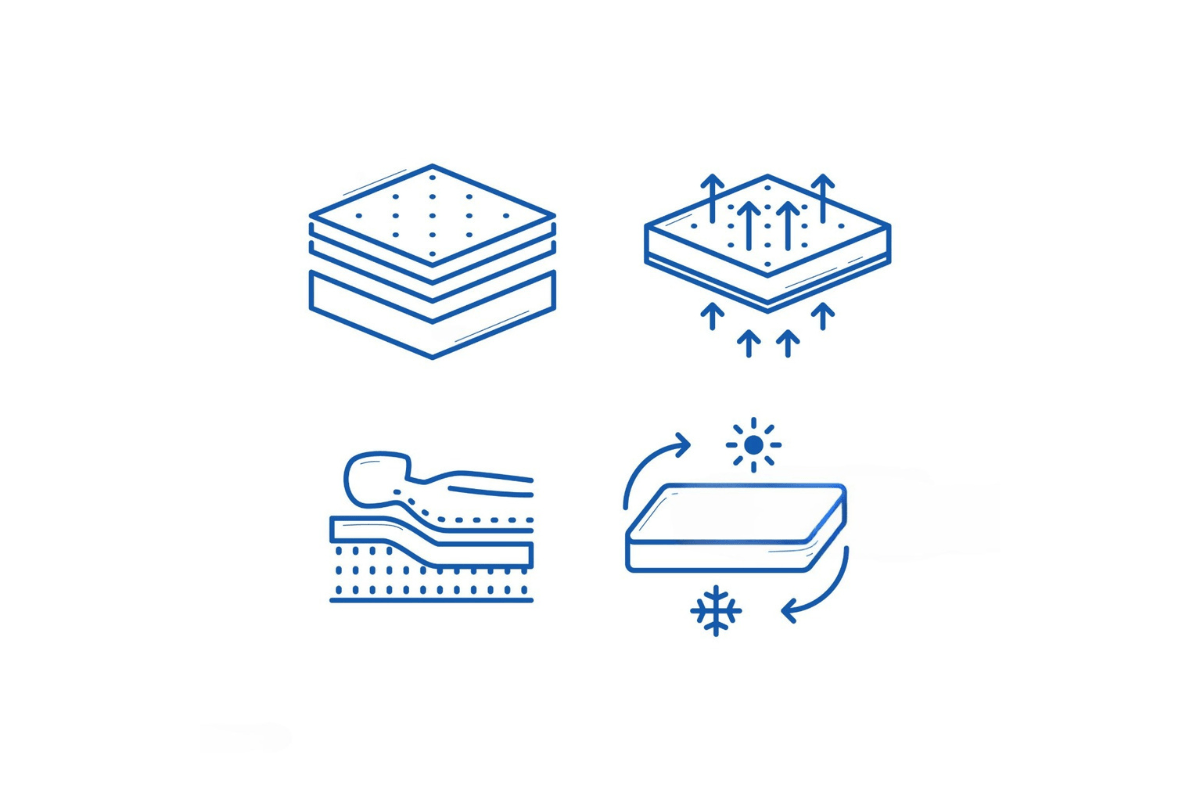
Pressure Relief
Gel memory foam cushions the body well and helps ease tension around pressure points. It adapts closely to curves, which can feel especially soothing for sore shoulders or hips. Side sleepers and people with chronic pain often say they feel less stiffness after lying on it for a few nights.
Unlike other materials that trap heat, gel helps absorb warmth and encourages a cooler sleep surface. It doesn’t change the firmness of the mattress, though it still feels like traditional memory foam. The main difference lies in how it handles temperature through the night. Some prefer this kind of foam because it feels more supportive during long rest periods. It doesn’t push back as much as spring beds, so the weight gets spread out instead of pressing into one spot. Many wake up without the usual aches they’d get on a firmer or thinner mattress.
Spinal Alignment
A mattress with proper spinal support keeps the body steady all night. There’s no awkward bending or sinking, just a balanced feel across the back and hips. Gel memory foam does this well because it stays responsive without feeling too stiff or too soft. It cushions the shoulders while keeping the lower back from sagging. This helps avoid that familiar pinch in the lower spine after waking up. People who sleep on gel memory foam usually notice less stiffness after long nights, especially in the lumbar area.
The material responds well to movement without tossing the spine out of alignment. It holds pressure points without forcing the body into odd angles. By the time morning comes, joints feel more rested and supported, especially for side or back sleepers.
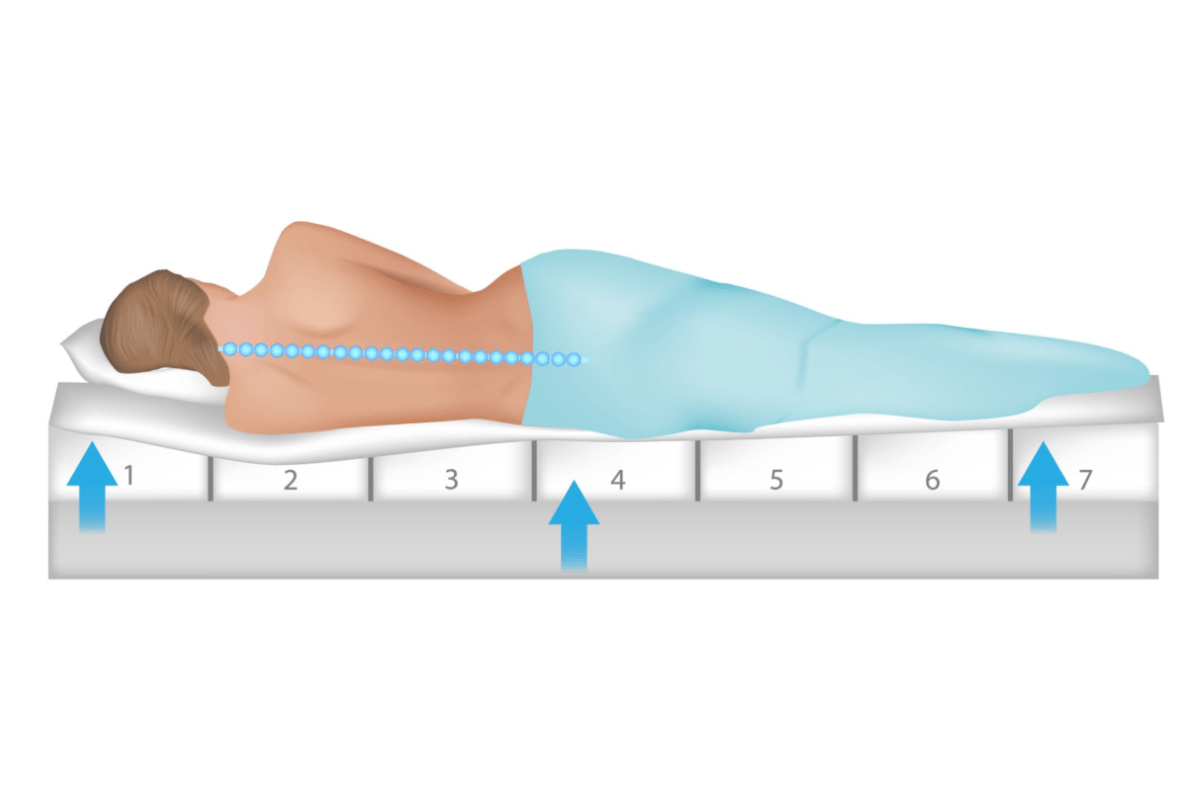
How Long Does Gel Memory Foam Last?
The lifespan of a memory foam mattress, its replacement, and the need for regular rotation are important in gel memory foam durability. Gel memory foam mattresses typically last between 7 and 10 years, though this varies based on the foam’s density and how usually the mattress is used. Higher-density foams, usually around 4 to 5 pounds per cubic foot or more, offer better support and durability over time.
Lower-quality foams, especially those with lower density, degrade more quickly and lose their original shape. This can lead to sagging and discomfort much sooner than with premium foams. It’s important to consider the mattress’s construction to avoid early wear.
Models with gel-infused memory foam generally maintain a cooler sleeping surface and can retain their shape longer than standard memory foam. Investing in a mattress from a reputable manufacturer often results in better long-term performance and comfort.
Are There Any Downsides?
Gel memory foam mattresses have a noticeable “new mattress smell,” which some find unpleasant. This odor usually fades after a few days but can pose a concern for sensitive sleepers. Choosing mattresses with CertiPUR-US certification helps reduce exposure to harmful chemicals and limits strong off-gassing.
These mattresses are heavier than traditional foam beds because of the gel infusion, which adds weight and can make moving or adjusting the mattress more difficult. This extra heft might inconvenience those who frequently rearrange their sleeping setup or handle the mattress alone.
The cost of gel memory foam mattresses usually runs higher than standard foam options due to the cooling features built into the design. While the price may present a consideration, many find the improved temperature regulation and pressure relief worthwhile, especially in warmer climates or for hot sleepers. Over time, users may also deal with fixing dips in the memory foam mattress to maintain even support and prolong its lifespan.
Gel Memory Foam In Hybrid Mattresses
Gel-infused memory foam sometimes appears in hybrid mattresses, which blend layers of foam with pocketed coils. This combination provides the gentle contouring feel of memory foam alongside the responsiveness and airflow provided by springs. The coils improve breathability, addressing common heat retention issues of traditional memory foam.
These hybrids provide more support and a livelier bounce compared to all-foam models, which can feel too soft or slow to respond. The gel infusion helps regulate temperature by dissipating heat, benefiting those who sleep hot but still prefer the cushioning sensation of foam. Additionally, edge support improves making it easier to sit or lie near the mattress edges without feeling like they will collapse.
Hybrid mattresses with gel memory foam combine pressure relief with better airflow and sturdiness for a versatile sleep surface. This approach suits various sleep preferences without the disadvantages found in purely foam or coil mattresses.
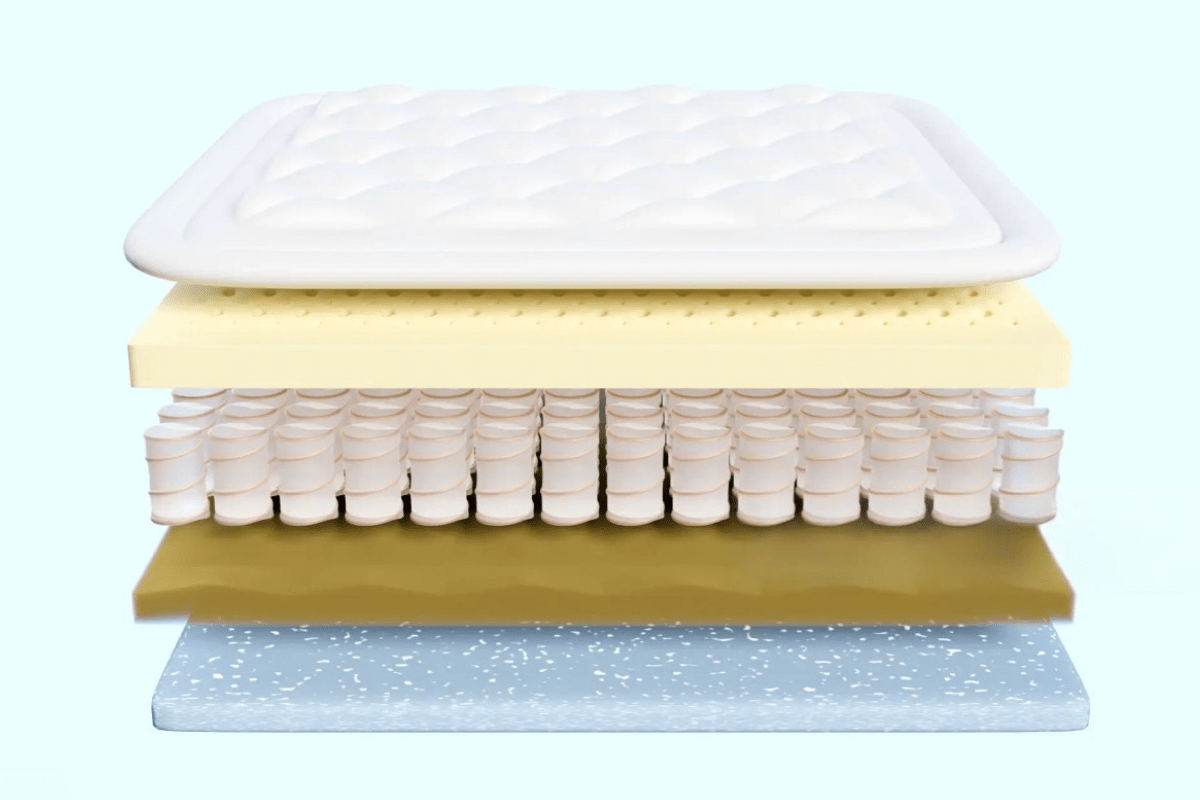
Who Should Get A Gel Memory Foam Mattress?
Gel memory foam mattresses are great for people who frequently feel too warm at night. The gel infusion helps with cooling compared to traditional memory foam, which tends to trap heat. This makes it a practical option for those who want the soft, body-hugging feel without overheating.
Many appreciate how these mattresses provide gentle pressure relief, especially side sleepers dealing with joint or back discomfort. The foam contours closely to the body and eases pressure points, while the gel adds a cooler touch. It suits those who value comfort but struggle with heat retention in regular memory foam.
Couples often notice better sleep quality due to the mattress’s ability to reduce motion transfer. Movements from one side rarely disturb the other, which helps minimize nighttime awakenings. For anyone who shares a bed and considers motion isolation important, this type of mattress offers a quieter and less interrupted rest.
Final Thoughts
Gel memory foam mattresses combine the contouring comfort of traditional memory foam with cooling properties designed to reduce heat buildup. This type of mattress benefits people who tend to sleep hot or those dealing with joint discomfort because of its pressure-relieving qualities. Couples also appreciate how well gel foam absorbs motion and minimizes disturbances during the night.
Many models provide varying levels of firmness and cooling features, so it is important to review product details carefully. Support and pressure relief must balance alongside temperature regulation to ensure a restful sleep experience. Paying attention to these factors helps find a mattress that suits individual sleep preferences and needs.
Gel-infused memory foam provides a cooler alternative to classic memory foam without sacrificing the gentle hug many sleepers enjoy. It offers a comfortable feel while addressing concerns about overheating, which can prove a drawback with traditional foam mattresses.
For those who want contouring support but prefer a cooler surface, this type of mattress is a practical option. Proper care includes getting urine or stains out of a memory foam mattress easily, cleaning and drying it thoroughly, compressing and moving it when needed, storing it correctly, and disposing of it responsibly at the end of its life.

